
Covered by:
| Recommendation 37 | Make authoritative sources of information available to others while implementing access and control mechanisms to ensure security and privacy in accordance with the relevant legislation. Supporting Solutions |
| Recommendation 38 | Develop interfaces with base registries and authoritative sources of information, publish the semantic and technical means and documentation needed for others to connect and reuse available information. Supporting Solutions |
| Recommendation 39 | Match each base registry with appropriate metadata including the description of its content, service assurance and responsibilities, the type of master data it keeps, conditions of access and the relevant licences, terminology, a glossary, and information about any master data it uses from other base registries. Supporting Solutions |
| Create and follow data quality assurance plans for base registries and related master data. Supporting Solutions |
| Legal initiative | Description |
Recommendations |
|
Short title: Law Enforcement Directive
Status: In force and transposed |
This Directive aims to better protect individuals’ personal data when their data is being processed by police and criminal justice authorities. It also aims to improve cooperation in the fight against terrorism and cross-border crime in the EU by enabling police and criminal justice authorities in EU countries to exchange information necessary for investigations more efficiently and effectively. The Data Protection Directive for Police and Criminal Justice Authorities is part of the EU data protection reform package along with the General Data Protection Regulation (Regulation (EU) 2016/679). | Recommendation 37 |
| Standards and Specifications | Relevant Recommendations | Corresponding Solutions |
|
Name: DCAT-AP Description: The DCAT Application Profile for data portals in Europe (DCAT-AP) is a specification based on the Data Catalogue Vocabulary (DCAT) developed by W3C. This application profile is a specification for metadata records to meet the specific application needs of data portals in Europe while providing semantic interoperability with other applications on the basis of reuse of established controlled vocabularies (e.g. EuroVoc) and mappings to existing metadata vocabularies |
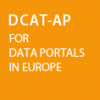
|
|
|
Name: BregDCAT-AP -RoR Description: The Registry of Registers is a solution dedicated to an application profile of DCAT-AP for base registries, namely, BRegDCAT-AP, aiming to provide a standard data model / specification for base registries access and interconnection. |
Recommendation 39 | 
|
| Solution | Description | Associated Recommendations |

|
ABR Catalogue of Solutions is aiming to provide you information on more than 120 solutions from the European Union (EU) institutions, MS and other countries to inspire you in your work and to re-use suitable solutions. | Recommendation 38 |

|
The CISE Node manages the communication protocol among participants, including the security, access control to the information and the reliability aspects. The CISE Node is a common block for all the partners connected to the network, but the management is not centralised. It uses the CISE Data and Service Models to ensure technical and semantic interoperability among the CISE stakeholders. | Recommendation 37 |
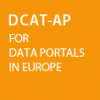
|
The DCAT Application Profile for data portals in Europe (DCAT-AP) is a specification based on the Data Catalogue Vocabulary (DCAT) developed by W3C. This application profile is a specification for metadata records to meet the specific application needs of data portals in Europe while providing semantic interoperability with other applications on the basis of reuse of established controlled vocabularies (e.g. EuroVoc) and mappings to existing metadata vocabularies | Recommendation 39 |

|
e-Certis is a free online tool mapping documents requested in public procurement procedures across borders. The system identifies and links certificates necessary as proof of compliance with tender criteria in various areas of administrative verification (e.g. tax, social security obligations, criminal records, etc.). This helps bring clarity to the cross-border bidding process. Information provided by e-Certis is inserted by National public entities in charge and regularly updated. The e-Certis service is linked with the European Single Procurement Document (ESPD), which is a single self-declaration form of a bidder's eligibility in public procurement. e-Certis and the ESPD significantly reduce the effort needed for submission of a tender offer and facilitate bidding across borders. |
Recommendation 38 |

|
The eID Building Block allows public administrations and private service providers to easily extend the use of their online services to citizens from other Member States, in line with the eIDAS Regulation. | Recommendation 37 |
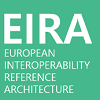
|
The European Interoperability Reference Architecture (EIRA©) is an architecture content metamodel defining the most salient architectural building blocks (ABBs) needed to build interoperable e-Government systems. The EIRA© provides a common terminology that can be used by people working for public administrations in various architecture and system development tasks. The EIRA© was created and is being maintained in the context of Action 2016.32 of the ISA² Programme. The EIRA uses (and extends) the ArchiMate language as a modelling notation and uses service orientation as an architectural style. | |

|
The CEF eTranslation Building Block is a machine translation tool that helps public administrations and businesses exchange information and documents across all official EU languages, Icelandic and Norwegian. Public administrations, citizens and businesses in the EU will thus be able to benefit from digital services in the language of their choice. |
Recommendation 37 |

Location Framework Blueprint
|
The European Union Location Framework (EULF) Blueprint is a framework of recommendations and related guidance for publishing and using location information and applying interoperability principles in digital government. The EULF Blueprint was initially developed through the EULF project in the ISA programme. The content has been updated extensively through the European Location Interoperability Solutions for e-Government (ELISE) project, which is part of the ISA2 programme. | |

|
The Guidelines for Successful Base Registry Interconnection consist of recommendations to improve access and interconnection of authentic sources of information in all four layers of the European Interoperability Framework. Specific and concrete actions are described to guide the user in enhancing access and interconnection of base registries. Furthermore, the Guidelines make reference to reusable solutions included in the Catalogue of Reusable Solutions. | |
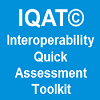
|
The objective of the IQAT© is to allow Solution Owners to assess the Potential Interoperability of their software solutions supporting Public Services. The toolkit is based on a specific conceptual model for the Interoperability assessment of software solutions, which relies on four interoperability areas: Interoperability (IOP) Governance, Software Architecture, |
Recommendation 40 |
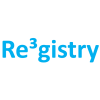
|
Re3gistry provides a central access point that allows labels and descriptions for reference codes to be easily looked up by humans, or retrieved by machines. It supports organisations in managing and updating reference codes in a consistent way, so that all versions of a code remain traceable and properly documented, and do not change or disappear over time. | |

|
The Reference Architecture contains provisions on how to make eDocuments available to others whilst complying with key legislation on privacy & security. | Recommendation 37 |

|
The Registry of Registers is a solution dedicated to an application profile of DCAT-AP for base registries, namely, BRegDCAT-AP, aiming to provide a standard data model / specification for base registries access and interconnection. |

